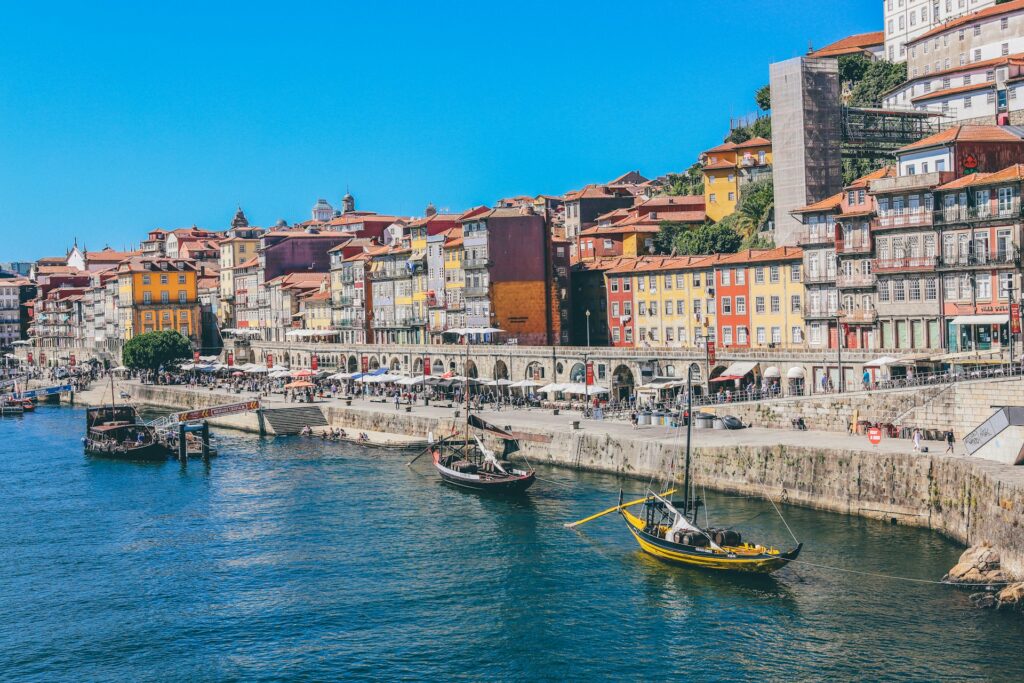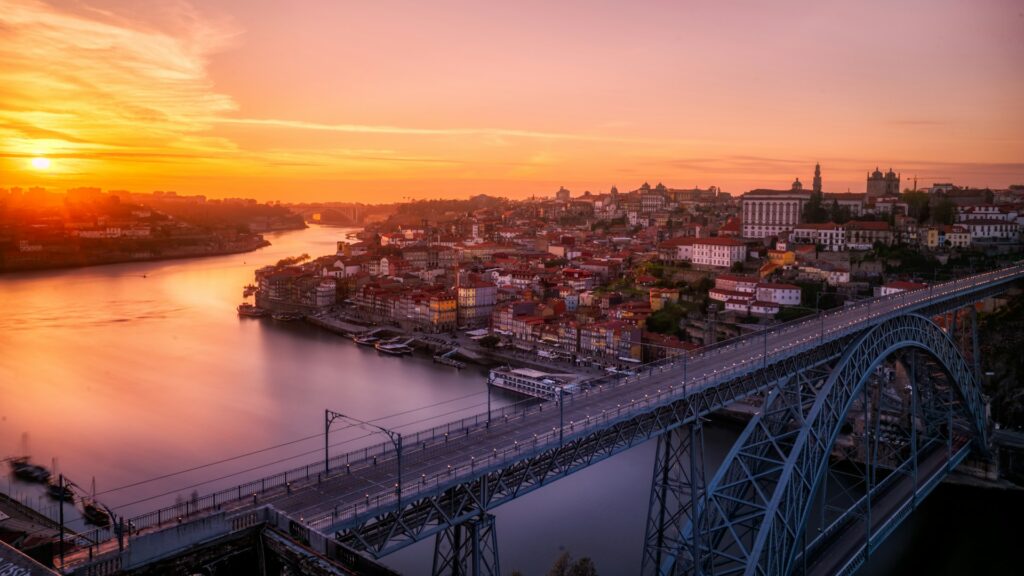Seeking inspiration for your next holiday? Porto has emerged as one of Europe’s most compelling destinations, offering visitors a rich blend of historical architecture, cutting-edge culture, and world-renowned wine heritage.
Forget Lisbon for a moment. Instead, stick with us for everything you need to know to plan and execute an unforgettable trip to Portugal’s second-largest city.
Getting There & Around
Porto International Airport (OPO) connects directly with major European cities and offers seasonal flights from the US. From the airport, the metro (Line E) reaches the city centre in 30 minutes for €2.60. Alternatively, taxis cost approximately €25, while Uber and Bolt operate extensively throughout the city.
Alternatively, Porto is a popular pitstop on cruises centred around the Iberian coast.

Best Time To Visit
Weather plays a crucial role in planning your Porto visit. The high season runs from June through September, with average temperatures between 18-25°C (64-77°F), though this also brings peak accommodation prices and larger crowds.
For a more balanced experience, consider visiting during the shoulder seasons of March-May or October-November, when you’ll find mild weather, fewer tourists, and better hotel rates. Winter visitors (December-February) will encounter occasional rain and cooler temperatures between 5-15°C (41-59°F), but can take advantage of the lowest prices of the year.
Pre-Trip Planning
Following Brexit, UK residents now need extra preparation time for Portugal travel. Since October 2023, British passport holders can travel to Portugal (and other Schengen countries) for up to 90 days in any 180-day period without a visa. However, your passport must have been issued within the previous 10 years and have at least 3 months’ validity remaining after your planned departure date.
While you won’t need to schedule Schengen visa appointments, it’s still wise to start planning three months ahead, especially for summer visits when accommodation in Porto fills quickly, particularly during festivals like São João (June 23-24).

Where To Stay
Porto’s diverse neighborhoods each offer distinct experiences for visitors. The Ribeira district, part of the UNESCO heritage site, puts you in the historic center with immediate access to major attractions and riverside dining.
Cedofeita attracts those interested in shopping and art galleries, offering a more local atmosphere away from tourist crowds. Vila Nova de Gaia, home to the famous wine cellars, provides river views and generally cheaper accommodation. For an upscale experience, consider Foz do Douro, where the river meets the ocean, offering beach access and a sophisticated residential feel.
Accommodation costs vary significantly by location and season. Budget travelers can find decent hostels for €20-30 per night, while mid-range hotels typically run €80-120. Luxury accommodations, particularly in prime locations, start from €200 per night.
Must-See Attractions
Porto’s architectural heritage deserves thorough exploration. São Bento Station, free to enter, showcases 20,000 hand-painted tiles depicting Portuguese history – arrive early morning to avoid crowds and capture the best photos. The Porto Cathedral (Sé do Porto) charges €3 entry and offers stunning views over the city, plus Gothic cloisters adorned with traditional azulejo tiles. Open from 9:00-12:30 and 14:30-19:00, it’s best visited mid-morning.
The Palácio da Bolsa, Porto’s former stock exchange, requires advance booking for its €10 guided tours. Allow 45 minutes to explore this 19th-century marvel, particularly the Arab Room with its elaborate gilded decorations.

Wine Tourism & Tasting
The port wine cellars of Vila Nova de Gaia represent an essential Porto experience. Popular houses like Taylor’s, Graham’s, and Sandeman offer tastings ranging from €15-25, with options for various port styles and ages. Most houses require advance booking during peak season, and tours typically include 2-3 wine samples plus an informative session about port production. The more expensive tastings often feature older vintages and private tours of the cellars.
Food & Dining
Porto’s culinary scene ranges from historic cafes to modern interpretations of Portuguese classics. The iconic francesinha, a multi-layered meat sandwich smothered in beer sauce, typically costs €8-12 and is large enough to share.
Traditional restaurants serve excellent bacalhau (salt cod) dishes for €12-18, prepared in countless ways. For a quick lunch, visit Casa Guedes, famous for their pork sandwiches (€5-7). The historic Café Majestic offers a glimpse into Porto’s past, though expect to pay premium prices for the ambiance. For modern Portuguese cuisine, Cantina 32 serves innovative dishes in a relaxed setting, with dinner averaging €30-40 per person.
Transportation Tips
The city’s public transport network is efficient and affordable. A single metro trip costs €1.20, while day passes offer unlimited travel for €7. The vintage trams, particularly Line 1 along the riverside, provide scenic tours for €3.50 one-way. The Funicular dos Guindais saves steep climbing for €2.50. However, most attractions lie within 20-30 minutes’ walk of the centre, making Porto an eminently walkable (or cyclable) city.

Day Trips Worth Taking
The Douro Valley warrants a full-day excursion, accessible by train from São Bento station for €10.55 one-way. The journey takes 2-2.5 hours through spectacular river valleys. Organised wine tours start from €70, including lunch and tastings at multiple quintas (wine estates).
Medieval Guimarães, Portugal’s first capital, makes an excellent alternative day trip. Trains depart regularly (€3.25 one-way, 75 minutes) to this UNESCO World Heritage site, known for its remarkably preserved castle and old town.
The Bottom Line
Porto rewards advance planning but doesn’t demand an extravagant budget. Allow at least three full days to experience the city’s essentials: one for the historic center and port caves, another for food exploration and contemporary arts, and a third for either coastal walks or a Douro Valley excursion.
First-time visitors should prioritize staying in Ribeira or Vila Nova de Gaia, especially if your visit is brief. Though summer brings perfect weather, May and late September offer the best combination of pleasant temperatures, reasonable prices, and manageable crowds.
Book wine tours and notable restaurants in advance, but leave room in your schedule for spontaneous wandering – some of Porto’s most memorable experiences come from stumbling upon neighborhood tascas or joining locals for sunset drinks along the Douro.





